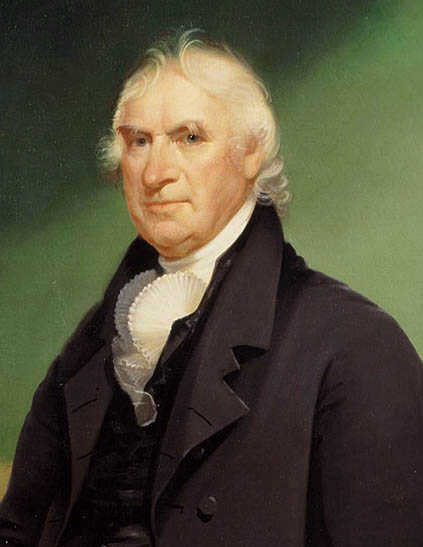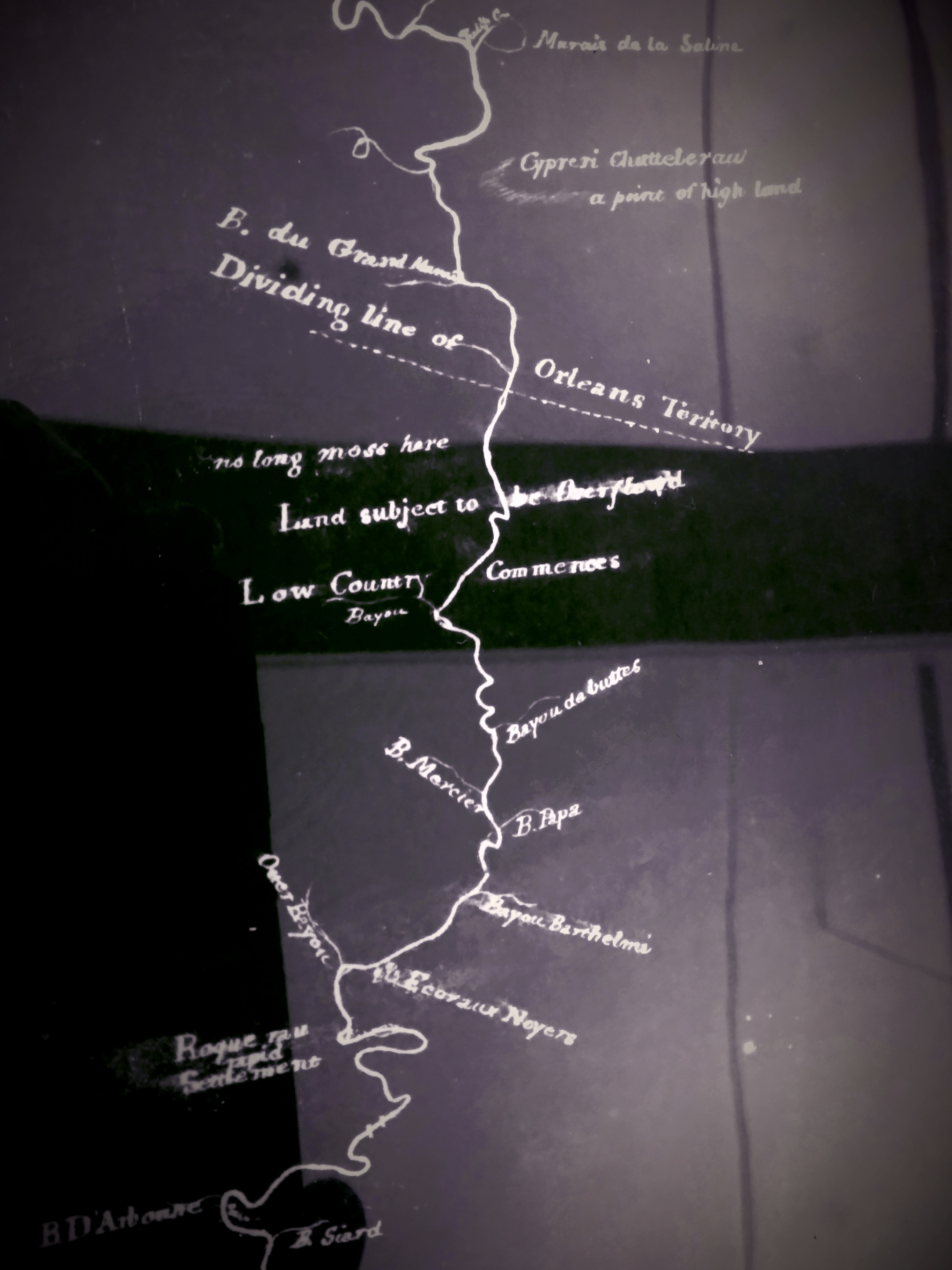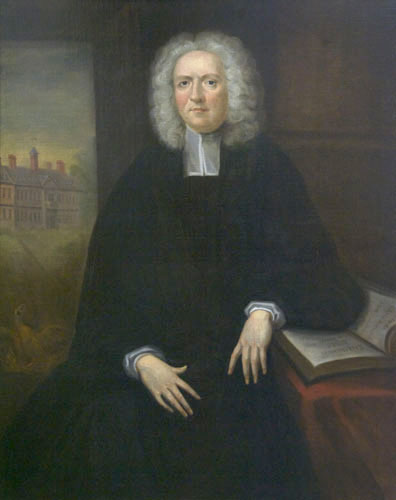|
Thomas B. Robertson
Thomas Bolling Robertson (February 27, 1779 – October 5, 1828) was an Attorney General of the Orleans Territory, Secretary of the Louisiana Territory, a United States representative from Louisiana, the 3rd Governor of Louisiana, Attorney General of Louisiana and a United States district judge of the United States District Court for the Eastern District of Louisiana and the United States District Court for the Western District of Louisiana. Education and career Born on February 27, 1779, born at Belleield in Petersburg, Virginia, Robertson attended the College of William & Mary and read law in 1806. He was admitted to the bar and entered private practice in Petersburg in 1806. He was Attorney General of the Orleans Territory from 1806 to 1807. He was Secretary of the Louisiana Territory from 1807 to 1811. Congressional service Upon the admission of the Territory into the Union as the State of Louisiana, Robertson was elected as a Democratic-Republican from Louisiana's at-lar ... [...More Info...] [...Related Items...] OR: [Wikipedia] [Google] [Baidu] |
United States District Court For The Eastern District Of Louisiana
The United States District Court for the Eastern District of Louisiana (in case citations, E.D. La.) is a United States federal court based in New Orleans. Appeals from the Eastern District of Louisiana are taken to the United States Court of Appeals for the Fifth Circuit (except for patent claims and claims against the U.S. government under the Tucker Act, which are appealed to the Federal Circuit). , the Interim United States Attorney for the Eastern District of Louisiana is Duane A. Evans. Jurisdiction This district comprises the following parishes: Assumption, Jefferson, Lafourche, Orleans, Plaquemines, St. Bernard, St. Charles, St. James, St. John the Baptist, St. Tammany, Tangipahoa, Terrebonne, and Washington. History On March 26, 1804, Congress organized the Territory of Orleans and created the United States District Court for the District of Orleans—the only time Congress provided a territory with a district court equal in its authority and jurisdiction t ... [...More Info...] [...Related Items...] OR: [Wikipedia] [Google] [Baidu] |
Democratic-Republican Party
The Democratic-Republican Party, known at the time as the Republican Party and also referred to as the Jeffersonian Republican Party among other names, was an American political party founded by Thomas Jefferson and James Madison in the early 1790s that championed republicanism, agrarianism, political equality, and expansionism. The party became increasingly dominant after the 1800 elections as the opposing Federalist Party collapsed. The Democratic-Republicans splintered during the 1824 presidential election. The majority faction of the Democratic-Republicans eventually coalesced into the modern Democratic Party, while the minority faction ultimately formed the core of what became the Whig Party. The Democratic-Republican Party originated as a faction in Congress that opposed the centralizing policies of Alexander Hamilton, who served as Secretary of the Treasury under President George Washington. The Democratic-Republicans and the opposing Federalist Party each became mo ... [...More Info...] [...Related Items...] OR: [Wikipedia] [Google] [Baidu] |
14th United States Congress
The 14th United States Congress was a meeting of the legislative branch of the United States federal government, consisting of the United States Senate and the United States House of Representatives. It met in the Old Brick Capitol in Washington, D.C. from March 4, 1815, to March 4, 1817, during the seventh and eighth years of James Madison's presidency. The apportionment of seats in the House of Representatives was based on the Third Census of the United States in 1810. Both chambers had a Democratic-Republican majority. Major events * November 1816: James Monroe defeated Rufus King in the U.S. presidential election. Major legislation * April 10, 1816: Establishment of the Second Bank of the United States * April 27, 1816: Dallas tariff Proposed, but not enacted * March 3, 1817: Bonus Bill of 1817 (vetoed) Treaties * August 24, 1816: Treaty of St. Louis signed States admitted and territories organized * December 11, 1816: Indiana was admitted as the 19th state, ... [...More Info...] [...Related Items...] OR: [Wikipedia] [Google] [Baidu] |
12th United States Congress
The 12th United States Congress was a meeting of the legislative branch of the United States federal government, consisting of the United States Senate and the United States House of Representatives. It met in Washington, D.C. from March 4, 1811, to March 4, 1813, during the third and fourth years of James Madison's presidency. The apportionment of seats in the House of Representatives was based on the Second Census of the United States in 1800. Both chambers had a Democratic-Republican majority. Major events *November 6, 1811: Battle of Tippecanoe: William Henry Harrison defeated Tecumseh's forces * December 16, 1811: New Madrid earthquake * April 4, 1812: President Madison enacted a 90-day embargo on trade with the United Kingdom *April 20, 1812: Vice President George Clinton died *June 18, 1812: War of 1812: United States declared war on Great Britain *August 16, 1812: War of 1812: Detroit surrendered to the British. *October 13, 1812: War of 1812: the Battle of Queensto ... [...More Info...] [...Related Items...] OR: [Wikipedia] [Google] [Baidu] |
United States House Of Representatives
The United States House of Representatives, often referred to as the House of Representatives, the U.S. House, or simply the House, is the Lower house, lower chamber of the United States Congress, with the United States Senate, Senate being the Upper house, upper chamber. Together they comprise the national Bicameralism, bicameral legislature of the United States. The House's composition was established by Article One of the United States Constitution. The House is composed of representatives who, pursuant to the Uniform Congressional District Act, sit in single member List of United States congressional districts, congressional districts allocated to each U.S. state, state on a basis of population as measured by the United States Census, with each district having one representative, provided that each state is entitled to at least one. Since its inception in 1789, all representatives have been directly elected, although universal suffrage did not come to effect until after ... [...More Info...] [...Related Items...] OR: [Wikipedia] [Google] [Baidu] |
United States Federal Judge
In the United States, federal judges are judges who serve on courts established under Article Three of the U.S. Constitution. They include the chief justice and the associate justices of the U.S. Supreme Court, the circuit judges of the U.S. Courts of Appeals, the district judges of the U.S. District Courts, and the judges of the U.S. Court of International Trade. These judges are often called "Article Three judges". Unlike the president and vice president of the United States The vice president of the United States (VPOTUS) is the second-highest officer in the executive branch of the U.S. federal government, after the president of the United States, and ranks first in the presidential line of succession. The vice ... and United States Senate, U.S. senators and United States House of Representatives, representatives, U.S. federal judges are not election, elected officials. They are nominated by the President and confirmed by the Senate, pursuant to the Appointments Claus ... [...More Info...] [...Related Items...] OR: [Wikipedia] [Google] [Baidu] |
Governor Of Louisiana
A governor is an administrative leader and head of a polity or political region, ranking under the head of state and in some cases, such as governors-general, as the head of state's official representative. Depending on the type of political region or polity, a ''governor'' may be either appointed or elected, and the governor's powers can vary significantly, depending on the public laws in place locally. The adjective pertaining to a governor is gubernatorial, from the Latin root ''gubernare''. Ancient empires Pre-Roman empires Though the legal and administrative framework of provinces, each administrated by a governor, was created by the Romans, the term ''governor'' has been a convenient term for historians to describe similar systems in antiquity. Indeed, many regions of the pre-Roman antiquity were ultimately replaced by Roman 'standardized' provincial governments after their conquest by Rome. Plato used the metaphor of turning the Ship of State with a rudder; the Latin ... [...More Info...] [...Related Items...] OR: [Wikipedia] [Google] [Baidu] |
United States Representative
The United States House of Representatives, often referred to as the House of Representatives, the U.S. House, or simply the House, is the lower chamber of the United States Congress, with the Senate being the upper chamber. Together they comprise the national bicameral legislature of the United States. The House's composition was established by Article One of the United States Constitution. The House is composed of representatives who, pursuant to the Uniform Congressional District Act, sit in single member congressional districts allocated to each state on a basis of population as measured by the United States Census, with each district having one representative, provided that each state is entitled to at least one. Since its inception in 1789, all representatives have been directly elected, although universal suffrage did not come to effect until after the passage of the 19th Amendment and the Civil Rights Movement. Since 1913, the number of voting representatives h ... [...More Info...] [...Related Items...] OR: [Wikipedia] [Google] [Baidu] |
Louisiana Territory
The Territory of Louisiana or Louisiana Territory was an organized incorporated territory of the United States that existed from July 4, 1805, until June 4, 1812, when it was renamed the Missouri Territory. The territory was formed out of the District of Louisiana, which consisted of the portion of the Louisiana Purchase north of the 33rd parallel (which is now the Arkansas–Louisiana state line). Background The Eighth Congress of the United States on March 26, 1804, passed legislation entitled "An act erecting Louisiana into two territories, and providing for the temporary government thereof," which established the Territory of Orleans and the District of Louisiana as organized incorporated U.S. territories. With regard to the District of Louisiana, this organic act, which went into effect on October 1, 1804, detailed the authority of the governor and judges of the Indiana Territory to provide temporary civil jurisdiction over the expansive region. Establishment On March ... [...More Info...] [...Related Items...] OR: [Wikipedia] [Google] [Baidu] |
Orleans Territory
The Territory of Orleans or Orleans Territory was an organized incorporated territory of the United States that existed from October 1, 1804, until April 30, 1812, when it was admitted to the Union as the State of Louisiana. History In 1804, all of the Louisiana Purchase south of the 33rd parallel became the Orleans Territory, and the remainder became the District of Louisiana. (The District of Louisiana was later renamed the Louisiana Territory; and still later, when the Orleans Territory became the State of Louisiana, the Louisiana Territory was renamed the Missouri Territory.) The Organic Act of 1804, passed on March 26 for October 1 implementation, also created the United States District Court for the District of Orleans—the only time Congress has ever provided a territory with a United States district court equal in its authority and jurisdiction to those of the states. Congress also established the Superior Court for the Territory of Orleans whose three judges wer ... [...More Info...] [...Related Items...] OR: [Wikipedia] [Google] [Baidu] |
Read Law
Reading law was the method used in common law countries, particularly the United States, for people to prepare for and enter the legal profession before the advent of law schools. It consisted of an extended internship or apprenticeship under the tutelage or mentoring of an experienced lawyer. The practice largely died out in the early 20th century. A few U.S. states still permit people to become lawyers by reading law instead of attending law school, although the practice is rare. In this sense, "reading law" specifically refers to a means of entering the profession, although in England it is still customary to say that a university undergraduate is "reading" a course, which may be law or any other. __TOC__ History United States In colonial America, as in Britain in that day, law schools did not exist at all until Litchfield Law School was founded in 1773. Within a few years following the American Revolution, some universities such as the College of William and Mary and the U ... [...More Info...] [...Related Items...] OR: [Wikipedia] [Google] [Baidu] |
College Of William & Mary
The College of William & Mary (officially The College of William and Mary in Virginia, abbreviated as William & Mary, W&M) is a public research university in Williamsburg, Virginia. Founded in 1693 by letters patent issued by King William III and Queen Mary II, it is the second-oldest institution of higher education in the United States and the ninth-oldest in the English-speaking world. Institutional rankings have placed it among the best public universities in the United States. The college educated American presidents Thomas Jefferson, James Monroe, and John Tyler. It also educated other key figures pivotal to the development of the United States, including the first President of the Continental Congress Peyton Randolph, the first U.S. Attorney General Edmund Randolph, the fourth U.S. Supreme Court Chief Justice John Marshall, Speaker of the House of Representatives Henry Clay, Commanding General of the U.S. Army Winfield Scott, sixteen members of the Continental Con ... [...More Info...] [...Related Items...] OR: [Wikipedia] [Google] [Baidu] |



